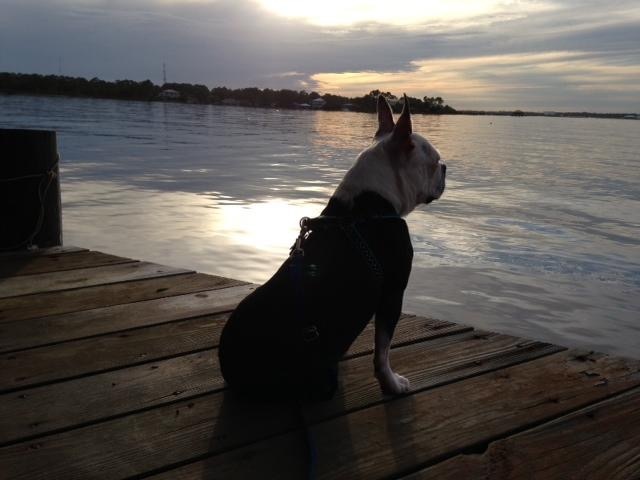Have you ever tried to take a break from fostering dogs? Step away from rescue work? I mean, really walk away? Stop helping dogs? Even turn off social media?
It’s hard to do! (I haven’t completely walked away, and I’ve tried!)
If you’ve thought about taking a break from fostering, read on. If you’ve never thought about taking a break, you really should read on!
I took a long break from fostering dogs
I wish I’d taken my own advice –
At the end of 2017, I hit a wall. 6 months prior, I saw it coming.
At the time, I was continuously fostering dogs (and had been, for years) while also doing a lot – and I mean a lot – of administrative work for the rescue organization, more than a full-time “work” week. My hope (and drive) was this: if I could streamline processes in many of the day-to-day activities of rescue management for the organization, there would be someone interested in assuming a responsibility, thereby lightening my load.
It didn’t happen.
Meanwhile, my personal needs were screaming for attention.
Rescue - A Deeply Personal Struggle
I didn’t want to stop volunteering my time or take a break from fostering. Rescue work is certainly much more rewarding and meaningful for me than many of the other items on my daily “to do” list. Not to mention, I believed I’d contributed good things to the organization and I was proud of my work. It was a deeply personal struggle.
In fact, I wanted to accomplish more.
But, I knew I couldn’t do it all. Without more volunteers to assume some responsibilities, my workload would not ease up.
When that wall hit, there was no question: I needed to step back and step back hard.
With an off-boarding timeline, I eventually resigned from all administrative duties. Once my foster dogs were placed, I also took a break from fostering, my true passion. 7 months later, I went after Carter. Not because I wanted to foster again, but because he was in less-than-ideal circumstances within the rescue organization and he had no options. It was the right decision, and I’m enjoying having him in my home. Even though I’m fostering him longer than I’d hoped (there isn’t an adopter for him, yet) he will stay with me until I find him a new family – it’s the way it is, no complaints. I will return to a foster-less home afterwards.
I miss volunteering, and I may volunteer again one day in some capacity, but not now – my little voice that I’m learning to listen to says “not yet. You are not ready, yet.”
Pressure to Rescue, Pressure to Foster
From the top down and from all four sides, there is immense pressure in animal rescue. Admirably, the rescuer’s mission is saving the homeless, neglected, and abandoned and there are plenty to save. In fact, too many animals need help. It is an overwhelming thought, for it gives us no “light at the end of the tunnel”. There is no break, no easing up, no slowdown of the number of animals needing rescue help. No break, unless you create it for yourself.
Administrators are pressured to take in another dog when maybe they shouldn’t, or agree to take in dogs that are outside their scope or skill-set to care for. They, too, have a hard time saying “no,” and rely on foster homes to say “yes.” The guilt is real. The struggle is real.
The guilt is real.
Guilty Pressures
Consequently, rescuers (or fosters) feeling the pressure sometimes get into trouble: They take in more than they can pay for or care for because the thought of the inevitable is too hard. I’ve seen dogs housed in pretty horrid foster homes so that they can “live.” Good rescuers found themselves in deep financial or legal trouble because they couldn’t.stop.rescuing. I’ve seen marriages dissolve. Jobs lost. Some of the best rescuers and foster homes in the “biz” walk away because the pressure becomes too much. I’ve read the headlines of actions much more permanent.
That pressure trickles down to the foster homes – pressure to make room for another, to agree to a dog that isn’t a good fit, agree to a dog that is way beyond a skill-set, or agree to help when you just requested a respite. The administrators are busy, and a quick “yes I will foster” means they can move on to the next pressing task. I totally get it. Been there, both as a foster home and an administrator.
Successful Rescuers Say "No"
The most successful rescues and foster homes and the ones with the greatest longevity know when to say “no” – they know their limits, they know what they do well, they know their resources, and nurture those resources. They know when to give themselves a break. When to take a hiatus. When to narrow their scope.
Need a Break? Take a Break!
“Encouraging” pleas to foster – whether they are said to us or we say them to ourselves – deliver intense pressure to foster when maybe we really should be taking a break from fostering, or perhaps deliver equal amounts of guilt when we choose to say “no.” The “last hope”, “just one more dog”, or “after this one foster placement” reasoning seems to be a particularly slippery slope: it’s too easy to keep giving yourself permission to keep going. It’s like eating potato chips or one more piece of chocolate.
The result is burnout, compassion fatigue, mistakes, and a dog that isn’t getting the same care you usually give.
When should you take a break from fostering?
- you are too busy
- your personal dogs are tired
- your family is tired
- you are tired
- you’ve had a catastrophic event and need time to assess
- you experienced a loss and want time to grieve
- you miss that foster dog that was recently adopted and you want time to grieve.
- your finances are strained
- your schedule is full of other obligations
- you begin to compromise on your dog care routines
- your stress level and/or health is impacted by your rescue work
- memory changes – increasingly scattered or forgetful
- accidents or increased problems with canine behavior
- sleep changes
- mood changes
- changes in leisure and social activities
- changes in self-care activities
- thought content that is of concern
- when you don’t love fostering anymore
- ANY TIME YOU WANT TO STOP
Pressure requires resistance.
Right, my physics peeps? No resistance, no pressure.
If you feel pressure, it’s your cue to check in. What’s your resistance?
I actually don’t remember all the times I’ve said “no” to pressure to foster “just one more dog” or “this dog needs you.” I do, however, remember that one time I agreed to foster a dog and I knew – I KNEW – in my heart that I was the wrong placement for the dog.
But, I tried, I stuck it out – and it was miserable. Not only for me, but also for my dogs, and for the little pup stuck at my house. Failing him actually caused more guilt for me than if I’d listened to my heart and said “no” in the first place.
Foster Homes Are More Important Than Rescuing A Dog
Being a foster parent is the most important role in the rescue.
It’s more important than fundraising,
more important than adoptions, the SECOND most important part of animal rescue.
and more important than building the agency’s community.
Foster homes are the biggest asset of a reputable rescue agency. Take care of yourself and align yourself with a rescue that supports you – both when you are active, and when you are on break.
You are as valuable to the organization when you are on fostering break as when you are actively fostering.
If you are an administrator for a rescue organization
- Consider starting a support group for your foster homes. It’s as easy as setting one up on Facebook. Make sure it’s a safe place for sharing with good rules and skilled moderators.
- Or, consider assigning your fosters a mentor or buddy, someone they can call upon when they want or need. This is super important when you are on-boarding a new foster home.
- Have someone in the organization who checks in with your fosters to see how they are doing and listens for clues that they may need or want a break – and discuss.
- Offer resources such as printable materials, a self-assessment questionnaire or online classes. Invest in your foster homes by improving their skills and knowledge base.
- Help them recognize when they might be experiencing compassion fatigue.
It takes time and energy to onboard a foster home. You want to keep them with your organization for the long-term. Keeping them long-term means allowing them to break. Help them take a break.
I’m aware that there is a certain level of “push” needed to get a foster home to commit to a dog in need – I well remember my foster coordinator days and the deafly quiet non-response I’d hear when I’d ask for foster help. It’s our nature to sit back and wait for someone else to raise their hand first. It’s the skilled administrator that recognizes when the only hand that is raising is the one that may need assistance.
If you are a foster home
Your biggest responsibility to the rescue (aside from the good care you provide to their dogs) is to your own self-awareness. Know where you are (mentally, emotionally and physically) know what you need and be firm in asking for it. If you are tired, say so. If you’d rather foster seniors than puppies, say so. If you want to increase your skills, say so. I find that sometimes it’s easier to sustain fostering work when you are a specialized home, rather than being available for whatever dog is next on the placement list.
Finally, If you have difficulty telling your administrator “no”, tell your administrator! A good leader will not abuse that knowledge. If you want a break from fostering, say so. Identify an agreed upon timeline for a check-in if you want. You will have a hard time saying “no” every two weeks if you haven’t been clear in asking for a couple of months break.
Here’s an idea: If you are tired of fostering but still want to be involved with rescue work, see if there is a good-fit administrative role you can assume within the rescue. Even the smallest rescue organization needs help with things like fundraising, writing, photography, data entry, social media, and many other small tasks. For me, working on administrative tasks while also fostering at the same time became a conflict; the more time I spent doing admin work, the less time I spent interacting with my foster dog.
It's the New Year - How Will You Foster?
Part of deciding how and when to foster includes knowing how and when to give yourself a break from fostering.
I pushed it too hard and for too long, and took on way more responsibility than I needed to, thinking the break would come on its own. It didn’t. It won’t ever come on its own.
As you decide how you include fostering dogs in your lifestyle for 2019, build in permission to break from fostering. Surround yourself with support and mentors, and schedule plenty of time for self-care activities.
Rescue needs you to take a break if you need it, but not take a permanent break, capiche?
More Reading
My Struggle With Compassion Fatigue
How Animal Rescuers Are Burning Out Their Empathy
Empathy Burnout And Compassion Fatigue Among Animal Rescuers
Great websites:
Jessica Dolce – Certified Compassion Fatigue Educator
Compassion Fatigue Project




